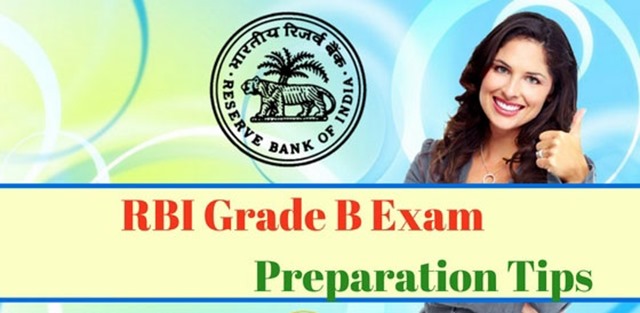We are all very well aware of Bank PO jobs. Thousands of students across the country apply for Bank PO Jobs.
However, there is another job which is related to the banking sector that young aspirants do not know about it. And that job is RBI Grade B officer. Of course, the major difference between Bank PO Career and RBI Grade B Officer Jobs is the later one is really tough compared to former.
Hence we decided to dedicate a full article shedding some light on preparation strategies to Crack RBI Grade B Exam.
Something About RBI Grade B Exam
As I have said earlier the RBI Grade B Exam is really tough. Thousands of students every year apply for just 134 vacancies. You can imagine how tough the competition is. The exam is vast and the students require a lot of knowledge from different areas like economy, finance, society etc.
I recommend you to start preparations early so you get more time to focus on all the different areas. There is a lot of difference between appearing for a Bank PO exam and RBI Grade B officer exam.
RBI Grade B Officer Selection Procedure
Before we get into details of exam pattern you need to know about the entire selection procedure. You can divide the exam into two phases, phase 1 and phase 2.
Phase 1 is a written exam which comprises 4 sections quantities aptitude, reasoning, English and General Awareness.
Phase 2 is also a written exam for topics related to the economy, social issues, finance, and English.
After Phase 2 you have to appear in an interview. Once you successfully clear the interview round a merit list is created and the first 134 students from the list are selected.
So selection procedure is not easy.
Exam Pattern for Phase 1
As I said earlier in Phase 1 there are four sections.
The entire written exam containing four sections is 2 hours long. In two hours you have to answer 200 questions for 200 marks which mean one question is of 1 mark. Here is the breakdown of 200 questions for 4 different sections.
The maximum weightage is for general awareness with 80 questions, followed by reasoning with 60 questions, finally English and quantitative aptitude with 30 questions each. General awareness is very important followed by reasoning. You have to finish these 200 questions in just 120 minutes. So for 1 question 1 minute!
Each of these 4 sections has cut off marks. So you have to attempt all the following 4 sections.
Preparation for Each 4 Sections
You have to start making a plan to prepare for each of these 4 sections.
Quantitative Aptitude
The first one is quantitative aptitude which has 30 questions. QA is tough than other sections. Here are some of the topics that will come under the QA are
– Operation on brackets
– Linear equations
– Average
– Ratios
– Profit, Loss, %, SI, and CI
– Arithmetic and Geography progression
– TSDW (Time speed distance and Work)
– Permutation & Combination, Probability
-Data Representation
DI questions alone is for 15 marks. There is no theory in DI. The questions that you will be asked is related to speed, distance, %, addition, subtraction etc.
You have to be very fast to answer these questions because time is very less. Practice hard for the quantitative aptitude. You can practice from the Aggarwal’s books on Quantitative aptitude.
The questions asked in QA are quite similar to other competitive exams like Bank PO or railway exams. So you can refer to books designed for cracking these exams also.
Finally, for QA section, I would say speed is very important. So you have to practice a lot of questions before you sit for the exam.
Reasoning
Second most difficult section after QA is the reasoning. Reasoning will have 60 questions and they are very important. This section is most scoring among all other sections. Here you have to interpret data from puzzles, brain teasers and answer following questions.
The cut-off score for reasoning is 24 out of 60 marks. If you practice enough then you can easily score over 30 – 35 marks. You should not give more than 40 minutes for this section. You have to practice beforehand so that you can finish off this section in just 40 minutes. Always remember there is a negative marking also. So answer questions carefully.
Here is the list of following topics that you need to practice.
– Blood relations. (a case/paragraph followed by questions)
– Sitting Arrangement (a case/paragraph followed by questions)
– Coding –decoding
– Input-output
– Inequality (x>y and y<z)
– Data sufficiency
– Number series- find the next number
– Assumption and inferences
– Syllogism
For practicing reasoning you can use Aggarwal’s book on verbal reasoning, M K Pandey for Analytical Reasoning by BSC publications.
English
Only 30 questions will be asked from the section. The questions can be tough and confusing if you have not prepared beforehand. Here you will be tested for the good grammar and the reading ability.
You have to score at least 15 to 17 marks out of 30. You should not devote more than 20 minutes for the English section. The cut-off marks for English is 14 so you need to score above that. Comprehension questions can be of 8 marks, fill in the blanks for 12 marks and sentence arrangement and correction are for 5 marks each. You must try all of these questions.
For preparation, I would advise that you brush up your grammar. Your English must be good. You also need to work on comprehension part. For English grammar, the best book is Wren and Martin plus S P Bakshi from Arihant publications.
You must also look into previous year question papers.
General Awareness
General awareness is the section that can be the high scoring section with just giving 20 minutes to it.
Here 80 questions can be answered in just 20 minutes and the cut off marks is 32 marks. Out of 80 questions, 55 questions will be asked for economy and rest of them are from geography, science etc. Hence you have to focus on the economy because that is where you can score most.
Some of the topics you have to prepare for GA are
– Committees formed by RBI
– Schemes started by the government
– New Plans and Role of RBI
– Union Budgets
– Credit Rating Agencies
– Economic Terms and Abbreviations
Always remember General awareness section needs time to prepare but if you good knowledge of economics then you can score up 60 marks out of 80.
Exam Pattern for Phase 2
So phase 1 is over and now you have to move on to phase 2. Phase 2 consists of 300 marks divided into 3 sections. The duration of the paper is 2 hours long.
These three sections are English, economic & social issues and finance & management with a weightage of 100 marks each. There are no cut off marks for Phase 2 sections like Phase 1 sections.
However, there is negative marking so answer carefully.
Preparation for Phase 2
Let us look deep into 3 sections.
Economic and Social Issues
Here are the topics from this section that you have to read.
– Growth and Development, Measurement of growth
– Poverty alleviation and employment generation in India
– Economic reforms, Industrial, and labor policy, Privatization, Globalization
– IMF, WB, Regional economic cooperation
– Multi culturist, Demographic trends, Urbanization, and migration
– Positive discrimination, Indian political system
Read NCERT text books and always watch the business news channel.
Finance and Management
Topics for Finance and Management are
– Financial system
– Financial Markets, Derivatives
– Recent developments in Banking, Public sector reforms, Disinvestments
– Finance commission recommendations, Inflation trends
Read books related to finance and management.
English
For English, you will be asked questions related to grammar and comprehension. You also have to prepare for speeches like direct speech and indirect speech. Tenses are very important here.
So this was all about Phase 2.
Interview
The last round after Phase 2 is an interview.An interview is for 50 marks. Here you will be asked all types of questions starting from your intro to economy.
So come prepared for the interview and do not take it lightly. For clearing interview round I recommend you to follow books on IAS and IPS interview.
Few Tips for Effective Preparation
Here are few tips for effective Preparation for RBI Grade B Exam.
Speed and Accuracy
Speed and accuracy are must for the Phase 1 of the exam. Especially for the QA and reasoning section. You have to practice questions so that you hone your skills for these two sections.
I recommend you to practice books from all other competitive exams like NDA, CDA, SCRA etc. You will get an idea how to answer questions in few seconds.
Mock Tests are Very Important
Mock tests are very important because it gives you confidence for facing the real exam. Mock tests help you to answer questions under great pressure. You can join coaching center where you can take up these mock tests.
You can also appear for the mock test conducted online. Mock tests are very important for QA, reasoning and English section.
So do not ignore mock tests.
Time Management
Managing time is the essence of the RBI Grade B exam. How much time you are going to devote on each section is very important. Like for studying General Awareness which is for 80 marks you have to start early and devote only a few hours a day.
However, for Reasoning and QA, you can start late but you have to give 3 to 4 hours a day. Similarly, for English, you have to give enough time. So create a timetable and devote time to each section in Phase 1 and Phase 2.
Revision
Finally, revision is very important. Keep at last few days for revising your preparation. It will help you to recall better when you are sitting in the examination hall.
So these were few tips for preparing RBI Grade B Officer Exam.






